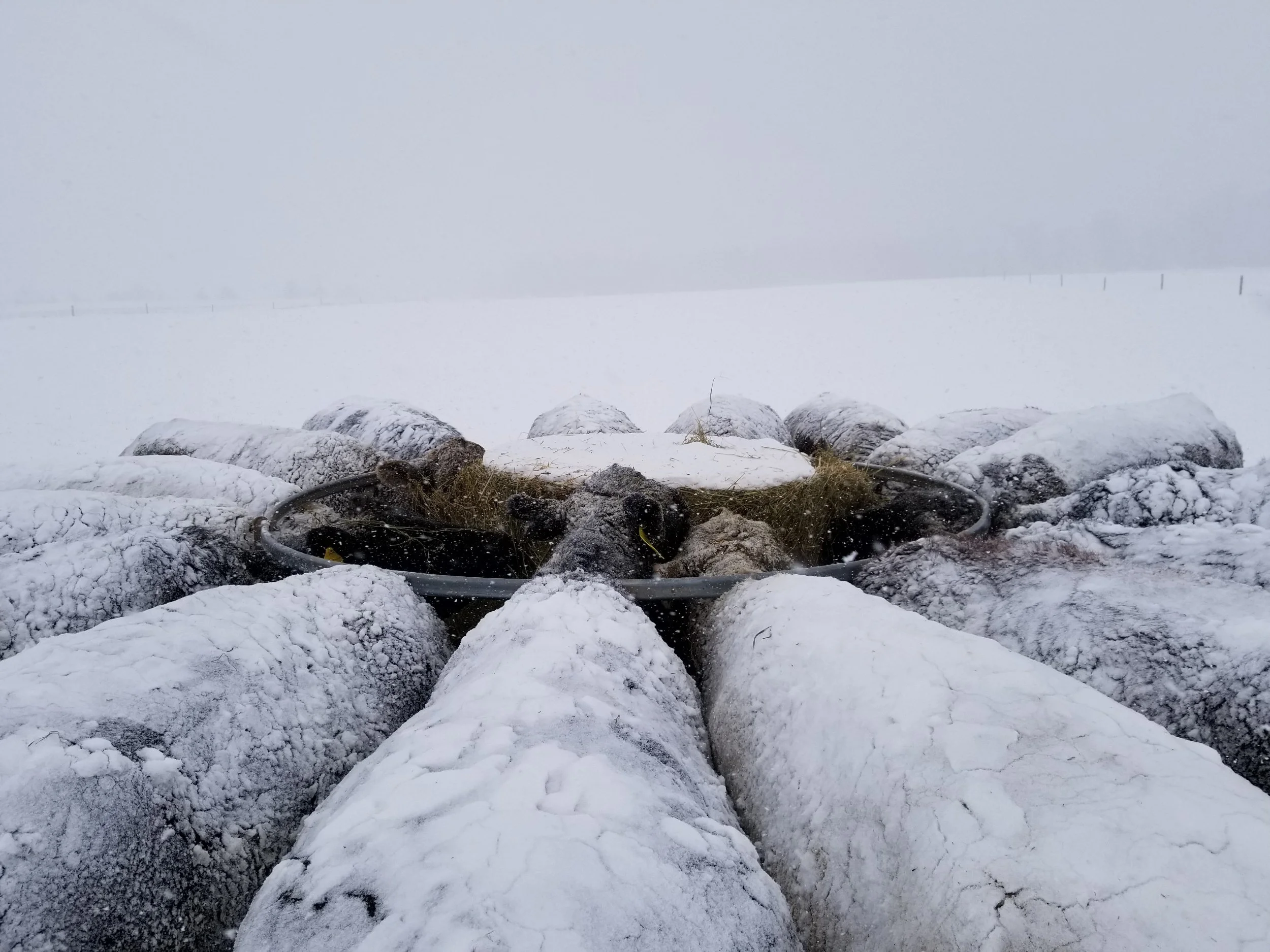Winter Feeding As We Await Green Pastures
As winter comes to an end, the white snow now turns to mud and slush. The cows have spent their winter on what we call a “sacrifice pasture.” We feed them on a section of pasture where we are ok with them leaving behind hoof prints and remnants of their feed. Really, there is no way to completely avoid a little bit of mud this time of year.
Over winter, we do what's called “bale grazing.” We placed enough round bales, both dry hay and baleage, out in the field for the cows to last them about 2 weeks at a time. Then we set up a temporary fence that only allows them access to a days worth of feed at a time. Each day, we move the fence to allow them access to the next bales. In this manner, we work our way across the field. Using this method of winter feeding, avoids accumulating manure and wasted feed in one small area. Instead, small amounts of leftover feed and manure are left across the whole field, helping to fertilize it. Bale grazing also minimizes the amount of times we have to start tractors in the cold weather to feed the cows.
Although the cows have access to the barn, most days and nights they choose to spend their time outside. Over winter, their fur has grown thick and warm. Soon, as spring approaches they will start to lose their winter coats to prepare for warmer weather.
A temporary fence separates the cows from the bales that are placed for the next few days.
The cows’ warm fur insulates them as the falling snow covers their backs.

